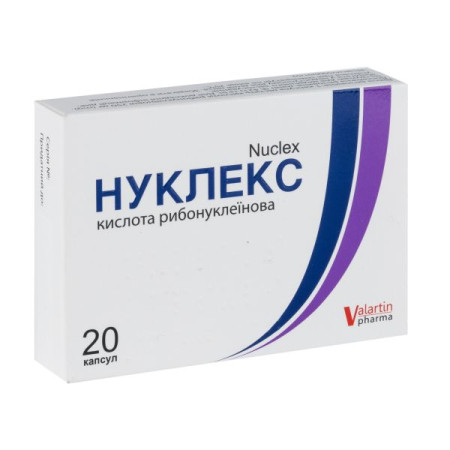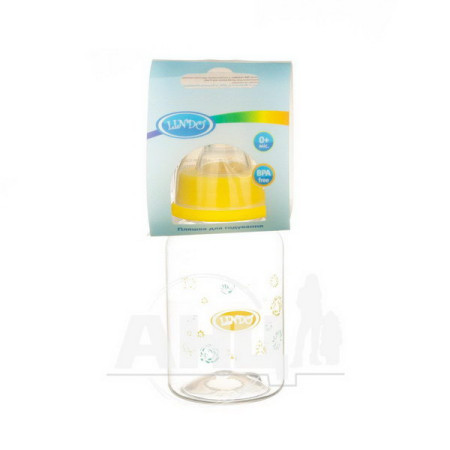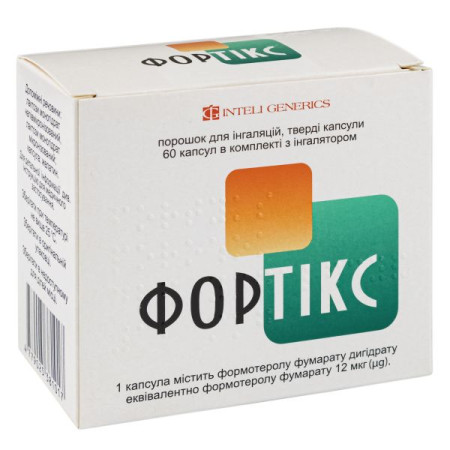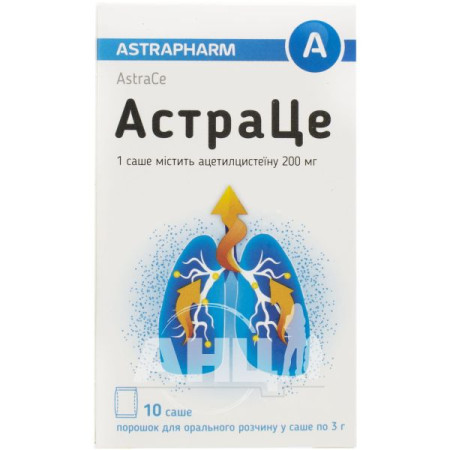Gabana capsules 50 mg blister No. 20
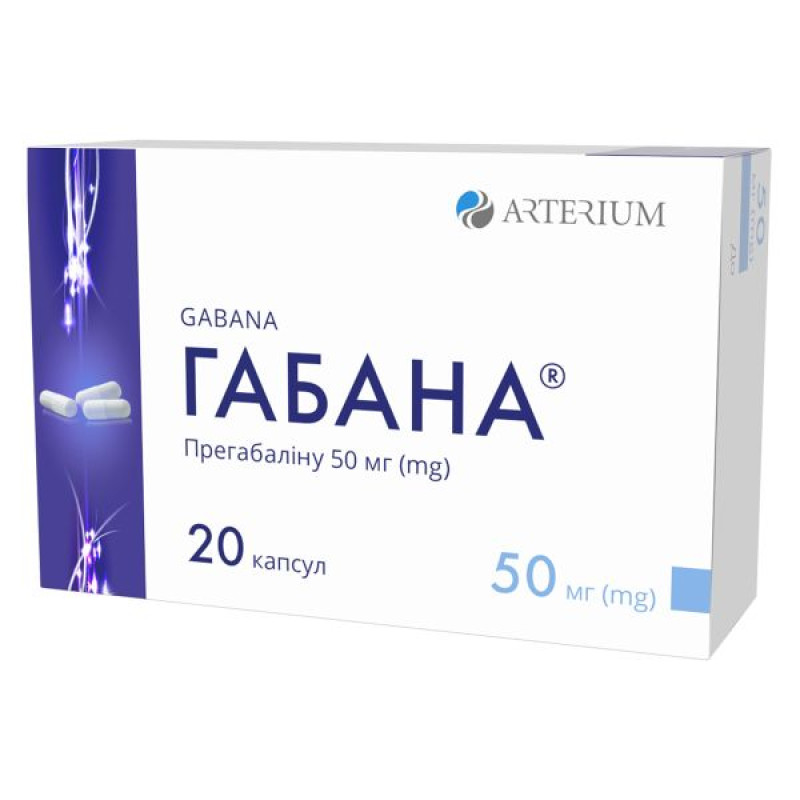
Instructions for Gabana capsules 50 mg blister No. 20
Composition
active ingredient: pregabalin;
1 capsule contains 50 mg, 75 mg, 150 mg or 300 mg of pregabalin in terms of dry matter;
excipients: lactose monohydrate; pregelatinized starch; talc;
capsule shell: gelatin, titanium dioxide (E 171), patent blue (E 133) – for 50 mg dosage; gelatin, titanium dioxide (E 171) – for 75 mg dosage; gelatin, titanium dioxide (E 171), ponso 4R (E 124), patent blue (E 131), diamond black (E 151) – for 150 mg dosage; gelatin, silver candurin (potassium aluminosilicate E 555, titanium dioxide E 171), diamond blue (E 133) – for 300 mg dosage.
Dosage form
Capsules.
Main physicochemical properties:
- 50 mg capsules: hard gelatin capsules numbered "2", blue body and cap; capsule contents - white or almost white powder;
- 75 mg capsules: hard gelatin capsules with a white opaque body and a white cap; capsule contents – white or almost white powder;
- 150 mg capsules: hard gelatin capsules with a white opaque body and a blue cap; capsule contents – white or almost white powder;
- 300 mg capsules: hard gelatin capsules numbered “0”, body and cap pearly blue; capsule contents – white or almost white powder.
Pharmacotherapeutic group
Analgesics. Other analgesics and antipyretics. Gabapentinoids. Pregabalin. ATC code N02B F02.
Pharmacological properties
Pharmacodynamics.
The active substance is pregabalin, which is an analogue of gamma-aminobutyric acid [(S)-3-(aminomethyl)-5-methylhexanoic acid].
Mechanism of action
Pregabalin binds to the auxiliary subunit (a2–d protein) of voltage-gated calcium channels in the central nervous system (CNS).
Clinical efficacy and safety
Neuropathic pain
Studies have shown the drug to be effective in treating diabetic neuropathy, postherpetic neuralgia, and spinal cord injury. The drug's effectiveness in other types of neuropathic pain has not been studied.
Pregabalin has been studied in 10 controlled clinical trials of up to 13 weeks duration with twice daily dosing and in trials of up to 8 weeks duration with three times daily dosing. Overall, the safety and efficacy profiles for the twice and three times daily dosing regimens were similar.
In clinical studies of up to 12 weeks duration in which the drug was used to treat neuropathic pain, a reduction in peripheral and central pain was observed after the first week and was maintained throughout the treatment period.
In controlled clinical trials of peripheral neuropathic pain, 35% of patients treated with pregabalin and 18% of patients treated with placebo achieved a 50% improvement in pain scores. Among patients who did not experience somnolence, this improvement was observed in 33% of patients treated with pregabalin and 18% of patients treated with placebo. Among patients who experienced somnolence, the proportion of patients who responded to treatment was 48% in the pregabalin group and 16% in the placebo group.
In a controlled clinical trial in central neuropathic pain, 22% of patients treated with pregabalin and 7% of patients treated with placebo had a 50% improvement in pain scores.
Epilepsy
Adjunctive therapy: Pregabalin has been studied in 3 controlled clinical trials of 12 weeks duration with twice- or three-times-daily dosing regimens. Overall, the safety and efficacy profiles for the twice- and three-times-daily dosing regimens were similar.
A decrease in the frequency of seizures was observed already in the first week.
In a 12-week placebo-controlled study, children (aged 4 to 16 years) were given pregabalin 2.5 mg/kg/day (maximum 150 mg/day), pregabalin 10 mg/kg/day (maximum 600 mg/day), or placebo. At least a 50% reduction in partial onset seizures from baseline was observed in 40.6% of patients receiving pregabalin 10 mg/kg/day (p = 0.0068 vs. placebo), 29.1% of patients receiving pregabalin 2.5 mg/kg/day (p = 0.2600 vs. placebo), and 22.6% of those receiving placebo.
In a 14-day placebo-controlled study, children (aged 1 month to less than 4 years) were treated with pregabalin 7 mg/kg/day, pregabalin 14 mg/kg/day, or placebo. The median daily seizure frequency at baseline and at the final visit was 4.7 and 3.8 in the pregabalin 7 mg/kg/day group, 5.4 and 1.4 in the pregabalin 14 mg/kg/day group, and 2.9 and 2.3 in the placebo group, respectively. Pregabalin 14 mg/kg/day significantly reduced the log-transformed partial-onset seizure frequency compared with placebo (p = 0.0223); pregabalin 7 mg/kg/day showed no improvement compared with placebo.
In a 12-week placebo-controlled study in patients with primary generalized tonic-clonic (PGTC) seizures, 219 patients aged 5 to 65 years (including 66 patients aged 5 to 16 years) were treated with pregabalin 5 mg/kg/day (maximum 300 mg/day) or 10 mg/kg/day (maximum 600 mg/day) or placebo as adjunctive therapy. At least a 50% reduction in PGTC seizure frequency was observed in 41.3%, 38.9% and 41.7% of patients treated with pregabalin 5 mg/kg/day, pregabalin 10 mg/kg/day and placebo, respectively.
Monotherapy (in newly diagnosed patients). Pregabalin was studied in one controlled clinical trial of 56 weeks duration with twice daily dosing. Pregabalin did not achieve the same level of efficacy as lamotrigine as assessed by the 6-month seizure-free endpoint. Pregabalin and lamotrigine were equally safe and well tolerated.
Generalized anxiety disorder
Pregabalin has been studied in 6 controlled trials of 4–6 weeks duration, one 8-week study in elderly patients, and one long-term relapse prevention study with a double-blind relapse prevention phase of 6 months duration.
A reduction in symptoms of generalized anxiety disorder according to the Hamilton Anxiety Assessment Scale (HAM-A) was observed as early as 1 week.
In controlled clinical trials (4-8 weeks duration), 52% of patients treated with pregabalin and 38% of patients treated with placebo had at least a 50% improvement in HAM-A total score from baseline to endpoint.
In controlled trials, blurred vision was more frequently observed in patients treated with pregabalin than in patients treated with placebo. In most cases, this phenomenon resolved with continued therapy. Ophthalmological examinations (including visual acuity testing, formal visual field testing, and dilated fundus examination) were performed in over 3600 patients in controlled clinical trials. Among these patients, visual acuity deteriorated in 6.5% of patients in the pregabalin group and 4.8% of patients in the placebo group. Visual field changes were observed in 12.4% of patients treated with pregabalin and 11.7% of patients in the placebo group. Fundus changes were observed in 1.7% of patients treated with pregabalin and 2.1% of patients in the placebo group.
Fibromyalgia
The efficacy of pregabalin was established in one 14-week, double-blind, placebo-controlled, multicenter study and one 6-week, randomized withdrawal study. These studies enrolled patients diagnosed with fibromyalgia based on the American College of Rheumatology criteria (3-month history of widespread pain and pain present in 11 or more of 18 specific tender points). The studies demonstrated a reduction in pain on a visual analog scale. Improvement was additionally demonstrated on the patient's global assessment and on a fibromyalgia impact questionnaire.
Children: A 15-week placebo-controlled study was conducted in 107 children aged 12 to 17 years with fibromyalgia who received pregabalin at a dose of 75 to 450 mg/day. The primary efficacy endpoint (change in total pain intensity from baseline to week 15; calculated using an 11-point rating scale) demonstrated a numerically greater improvement in patients treated with pregabalin compared to patients treated with placebo, but this improvement did not reach statistical significance. The most common adverse reactions observed in clinical trials were dizziness, nausea, headache, weight gain, and fatigue. The overall safety profile in adolescents was similar to that in adults with fibromyalgia.
Pharmacokinetics.
The steady-state pharmacokinetics of pregabalin were similar in healthy volunteers, patients with epilepsy receiving antiepileptic drugs, and patients with chronic pain.
Pregabalin is rapidly absorbed in the fasted state and reaches peak plasma concentrations (Cmax) within 1 hour after single and multiple dosing. The estimated oral bioavailability of pregabalin is greater than 90% and is independent of dose. Steady state is reached within 24–48 hours after multiple dosing. The rate of absorption of pregabalin is reduced when administered with food, resulting in a decrease in Cmax of approximately 25–30% and a delay in time to peak concentration (tmax) of approximately 2.5 hours. However, administration of pregabalin with food had no clinically significant effect on the extent of absorption.
Distribution
Pregabalin has been shown to cross the blood-brain barrier in rats, mice and monkeys in preclinical studies. Pregabalin also crosses the placenta in rats and is excreted in the milk of lactating rats. In humans, the apparent volume of distribution of pregabalin after oral administration is approximately 0.56 l/kg. Pregabalin is not bound to plasma proteins.
Metabolism
Pregabalin undergoes minimal metabolism in humans. Following a dose of radiolabeled pregabalin, approximately 98% of the radioactivity was excreted in the urine as unchanged pregabalin. The N-methylated derivative of pregabalin, the major metabolite of the drug, was detected in the urine at 0.9% of the administered dose. In nonclinical studies, there was no racemization of the S-enantiomer of pregabalin to the R-enantiomer.
Breeding
Pregabalin is eliminated from the systemic circulation unchanged primarily by renal excretion. The mean elimination half-life of pregabalin is 6.3 hours. The plasma and renal clearance of pregabalin are directly proportional to creatinine clearance (see section "Pharmacokinetics. Renal impairment").
Patients with impaired renal function or patients on hemodialysis require dose adjustment (see section "Method of administration and dosage", Table 1).
Linearity/nonlinearity
The pharmacokinetics of pregabalin are linear over the recommended dose range. The variability in the pharmacokinetics of pregabalin within patients is low (less than 20%). The pharmacokinetics of multiple doses are predictable based on data obtained with the administration of a single dose. Therefore, there is no need for routine monitoring of pregabalin plasma concentrations.
Sex
Results of clinical studies indicate that there is no clinically significant effect of gender on pregabalin plasma concentrations.
Kidney failure
Pregabalin clearance is directly proportional to creatinine clearance. In addition, pregabalin is effectively removed from plasma by haemodialysis (after 4 hours of haemodialysis, pregabalin plasma concentrations are reduced by approximately 50%). Since renal excretion is the major route of elimination of pregabalin, patients with renal impairment should be advised to reduce the dose of pregabalin and to administer an additional dose after haemodialysis (see section 4.2, Table 1).
Liver failure
Specific pharmacokinetic studies in patients with hepatic impairment have not been conducted. Since pregabalin is not extensively metabolized and is excreted primarily unchanged in the urine, it is unlikely that hepatic impairment would significantly affect pregabalin plasma concentrations.
Children
The pharmacokinetics of pregabalin were evaluated in children with epilepsy (age groups: 1 to 23 months, 2 to 6 years, 7 to 11 years, and 12 to 16 years) at doses of 2.5 mg/kg/day, 5 mg/kg/day, 10 mg/kg/day, and 15 mg/kg/day in a pharmacokinetic and tolerability study.
Following oral administration of pregabalin to children in the fasted state, plasma tmax was generally similar across age groups and ranged from 0.5 hours to 2 hours post-dose.
Pregabalin Cmax and area under the concentration-time curve (AUC) increased linearly with increasing dose in each age group. In children weighing <30 kg, AUC values were 30% lower, due to a 43% increase in weight-adjusted clearance in these patients compared to patients weighing ≥30 kg.
The terminal half-life of pregabalin averaged approximately 3–4 hours in children under 6 years of age and 4–6 hours in children over 7 years of age.
In a population pharmacokinetic analysis, creatinine clearance was shown to be a significant covariate for oral pregabalin clearance and body weight was a significant covariate for the apparent volume of distribution of oral pregabalin, and this relationship was similar in pediatric and adult patients.
The pharmacokinetics of pregabalin in patients under 3 months of age have not been studied (see sections 5.1, 5.2, and 4.8).
Elderly patients
Pregabalin clearance tends to decrease with age. This decrease in oral pregabalin clearance is consistent with the age-related decrease in creatinine clearance. Patients with age-related renal impairment may require a reduction in the dose of pregabalin (see Dosage and Administration, Table 1).
The pharmacokinetics of pregabalin administered at a dose of 150 mg every 12 hours (300 mg daily dose) were evaluated in 10 lactating women for at least 12 weeks postpartum. Breastfeeding had no or negligible effect on the pharmacokinetics of pregabalin. Pregabalin was excreted in breast milk, with mean steady-state concentrations approximately 76% of maternal plasma concentrations. The estimated dose to the breastfed infant (with a mean milk intake of 150 mL/kg/day) from a woman taking pregabalin at a dose of 300 mg/day or a maximum dose of 600 mg/day is 0.31 or 0.62 mg/kg/day, respectively. These estimated doses represent approximately 7% of the total maternal daily dose on a mg/kg basis.
Indication
Neuropathic pain
Gabana® is indicated for the treatment of neuropathic pain of peripheral or central origin in adults.
Epilepsy
Gabana® is indicated in adults as adjunctive treatment for partial seizures with or without secondary generalization.
Generalized anxiety disorder
Gabana® is indicated for the treatment of generalized anxiety disorder in adults.
Fibromyalgia.
Contraindication
Hypersensitivity to the active substance or to any of the excipients of the medicinal product (see section "Composition").
Interaction with other medicinal products and other types of interactions
Since pregabalin is mainly excreted unchanged in the urine, undergoes little metabolism in humans (less than 2% of the dose is excreted in the urine as metabolites), does not inhibit the metabolism of other drugs in vitro, and does not bind to plasma proteins, it is unlikely that pregabalin can cause or be the target of pharmacokinetic interactions.
In vivo studies and population pharmacokinetic analysis
In vivo studies have not shown any clinically significant pharmacokinetic interactions between pregabalin and phenytoin, carbamazepine, valproic acid, lamotrigine, gabapentin, lorazepam, oxycodone or ethanol. Population pharmacokinetic analysis has shown that oral antidiabetics, diuretics, insulin, phenobarbital, tiagabine and topiramate have no clinically significant effect on the clearance of pregabalin.
Oral contraceptives, norethisterone and/or ethinyl estradiol
Co-administration of pregabalin with oral contraceptives, norethisterone and/or ethinyl estradiol does not affect the steady-state pharmacokinetics of either drug.
Drugs that affect the CNS
Pregabalin may potentiate the effects of ethanol and lorazepam. During post-marketing surveillance, cases of respiratory failure, coma and death have been reported in patients taking pregabalin in combination with opioids and/or other CNS depressants. Pregabalin is likely to potentiate the cognitive and gross motor impairments caused by oxycodone.
Interaction in elderly patients
No specific pharmacodynamic interaction studies have been conducted in the elderly. Drug interaction studies have only been conducted in adult patients.
Application features.
Patients with diabetes
In accordance with current clinical practice, some patients with diabetes mellitus whose body weight has increased during the use of pregabalin may require dose adjustment of hypoglycemic drugs.
Hypersensitivity reactions
Hypersensitivity reactions, including angioedema, have been reported. If symptoms of angioedema such as facial swelling, perioral swelling or upper airway swelling occur, pregabalin should be discontinued immediately.
Severe cutaneous adverse reactions (SCARs)
Severe cutaneous adverse reactions (SCARs), including Stevens-Johnson syndrome (SJS) and toxic epidermal necrolysis (TEN), which can be life-threatening or fatal, have been reported rarely in association with pregabalin treatment. Patients should be advised of the signs and symptoms and monitored closely for skin reactions when prescribing the medicinal product. If signs and symptoms suggestive of these reactions occur, pregabalin should be discontinued immediately and alternative treatment should be considered (if appropriate).
Dizziness, drowsiness, loss of consciousness, confusion and mental disorders
Pregabalin has been associated with dizziness and somnolence, which may increase the risk of falls in elderly patients. Loss of consciousness, confusion, and mental status changes have been reported. Therefore, patients should exercise caution until they are aware of the potential effects of the drug.
Vision disorders
In studies in which ophthalmological examinations were performed, the incidence of visual acuity deterioration and visual field changes was higher in patients treated with pregabalin compared to patients in the placebo group; the incidence of fundus changes was higher in patients in the placebo group (see section 5.1).
Ocular adverse reactions, including vision loss, blurred vision, or other changes in visual acuity, many of which were transient, have also been reported. Discontinuation of pregabalin may result in resolution or reduction of these ocular symptoms.
Kidney failure
Cases of renal failure have been reported. This effect was sometimes reversible after discontinuation of pregabalin.
Withdrawal of concomitant antiepileptic drugs
Data on the withdrawal of concomitant antiepileptic drugs after seizure control is achieved with the addition of pregabalin are insufficient to switch to pregabalin monotherapy.
Withdrawal symptoms
Some patients have experienced withdrawal symptoms after discontinuation of short-term or long-term pregabalin therapy. The following symptoms have been reported: insomnia, headache, nausea, anxiety, diarrhea, flu-like syndrome, nervousness, depression, suicidal ideation, pain, seizures, hyperhidrosis and dizziness, which are indicative of drug dependence. The occurrence of withdrawal symptoms after discontinuation of pregabalin may indicate drug dependence (see section 4.8). This information should be communicated to the patient before treatment is initiated. If pregabalin is to be discontinued, it is recommended that this be done gradually over at least 1 week, regardless of the indication (see section 4.8).
Convulsions, including status epilepticus and grand mal seizures, may occur during treatment with pregabalin or shortly after discontinuation of its use.
Data on pregabalin withdrawal after long-term use indicate that the incidence and severity of withdrawal symptoms may be dose-dependent.
Congestive heart failure
Congestive heart failure has been reported in some patients taking pregabalin. This reaction has been observed primarily during the treatment of neuropathic pain with pregabalin in elderly patients with cardiovascular disorders. Pregabalin should be used with caution in such patients. This phenomenon may resolve upon discontinuation of pregabalin.
Treatment of neuropathic pain of central origin due to spinal cord injury
During the treatment of central neuropathic pain due to spinal cord injury, the incidence of adverse reactions in general, CNS adverse reactions, especially somnolence, was increased. This may be due to the additive effect of concomitant medicinal products (e.g. antispasticity medicinal products) required for the treatment of this condition. This should be taken into account when prescribing pregabalin to such patients.
Respiratory depression
Cases of severe respiratory depression have been reported with pregabalin. Patients with compromised respiratory function, respiratory or neurological disease, renal impairment, patients taking concomitant CNS depressants, and the elderly may be at greater risk of this serious adverse reaction. Dose adjustment may be necessary for these patients (see Dosage and Administration).
Suicidal thinking and behavior
Suicidal ideation and behavior have been reported in patients treated with antiepileptic drugs for certain indications. A meta-analysis of randomized, placebo-controlled trials of antiepileptic drugs also showed a small increased risk of suicidal ideation and behavior. The mechanism of this risk is unknown. Suicidal ideation and behavior have been observed in patients treated with pregabalin in the post-marketing period (see section 4.8). An epidemiological study using a self-controlled study design (comparing treatment periods with periods without treatment within an individual) has shown an increased risk of new suicidal behavior and deaths due to suicide in patients treated with pregabalin.
Patients (and caregivers of patients) should seek medical advice if signs of suicidal thinking or behavior emerge. Patients should be monitored for signs of suicidal thinking and behavior, and appropriate treatment should be considered. Discontinuation of pregabalin should be considered if suicidal thinking and behavior emerge.
There have been reports of events associated with the deterioration of lower gastrointestinal function (such as intestinal obstruction, paralytic ileus, constipation) following the administration of pregabalin with medicinal products that may cause constipation, such as opioid analgesics. When pregabalin is used in combination with opioids, precautions should be taken to prevent constipation (especially in women and the elderly).
Concomitant use with opioids
Caution is advised when pregabalin is used concomitantly with opioids due to the risk of CNS depression (see section 4.5). In controlled clinical trials, patients taking pregabalin concomitantly with an opioid had an increased risk of opioid-related death compared with opioids alone (adjusted odds ratio [aOR], 1.68 [95% CI, 1.19-2.36]). This increased risk was observed at low doses of pregabalin (≤ 300 mg, 1.52 aOR [95% CI, 1.04-2.22]) with a trend toward an increased risk at high doses of pregabalin (> 300 mg, 2.55 aOR [95% CI, 1.24-5.06]).
Misuse, abuse or addiction
Pregabalin can cause drug dependence, which can occur at therapeutic doses. Cases of abuse and misuse have been reported. Patients with a history of substance abuse may be at higher risk of pregabalin misuse, abuse, and dependence, and pregabalin should be used with caution in such patients. The risk of misuse, abuse, or dependence should be carefully evaluated before prescribing pregabalin.
Patients receiving pregabalin should be monitored for signs of pregabalin misuse, abuse or dependence, such as development of habituation, overdose and drug-seeking behaviour.
Encephalopathy
Cases of encephalopathy have been reported, occurring predominantly in patients with underlying conditions that may predispose to encephalopathy.
Women of reproductive age/contraception
Pregabalin use during the first trimester of pregnancy may cause serious birth defects in the fetus. Pregabalin should not be used during pregnancy unless the benefit to the pregnant woman clearly outweighs the potential risk to the fetus. Women of childbearing potential should use effective contraception during treatment (see section “Use during pregnancy or lactation”).
Excipients
Gabana® contains lactose. Patients with rare hereditary problems of galactose intolerance, the Lapp lactase deficiency or glucose-galactose malabsorption should not take this medicine.
The drug Gabana® in a dose of 150 mg contains dyes diamond black and ponso 4R (crimson 4R), which may cause allergic reactions.
Use during pregnancy or breastfeeding
Women of reproductive age/contraception for women
Women of reproductive age should use effective contraception during treatment (see section "Special warnings and precautions for use").
Pregnancy
Animal studies have shown reproductive toxicity: pregabalin crossed the placenta in rats (see section 5.2). Pregabalin may cross the placenta in humans.
Significant birth defects
An observational study conducted in Scandinavia, which followed over 2700 pregnancies, demonstrated a higher prevalence of major congenital malformations (MCMs) in the infant population (live or stillborn) exposed to pregabalin in the first trimester compared to the unexposed population (5.9% vs. 4.1%).
The risk of developing VVD in children whose mothers used pregabalin in the first trimester of pregnancy was slightly higher compared with children who were not exposed in utero (adjusted prevalence ratio and 95% confidence interval: 1.14 (0.96–1.35)), and compared with children exposed to lamotrigine (1.29 (1.01–1.65)) or duloxetine (1.39 (1.07–1.82)).
Analysis of specific malformations showed a higher risk of malformations of the nervous system, eyes, orofacial clefts, urinary tract and genital malformations, but the number of such malformations was small and the estimates were imprecise.
Gabana® should not be used during pregnancy unless clearly necessary (prescribed only when the benefit to the mother clearly outweighs the potential risk to the fetus).
Breast-feeding
Small amounts of pregabalin have been detected in the milk of nursing women. Nursing women should be advised that breastfeeding is not recommended while taking pregabalin.
Fertility
There are no clinical data on the effect of pregabalin on female fertility.
In a fertility study in female rats, adverse effects on reproductive function were observed. In a fertility study in male rats, adverse effects on reproductive function and development were observed. The clinical relevance of these findings is unknown.
Ability to influence reaction speed when driving vehicles or other mechanisms
Pregabalin may have minor or moderate influence on the ability to drive and use machines. Pregabalin may cause dizziness and drowsiness, which may affect the ability to drive and use machines. Therefore, patients should be advised to refrain from driving or operating machinery or other potentially hazardous activities until it is known whether pregabalin affects their ability to perform such activities.
Method of administration and doses
Method of application
Gabana® should be taken regardless of meals.
The drug Gabana® is intended for oral use only.
Doses
The dose range can vary from 150 to 600 mg per day. The daily dose is divided into 2 or 3 doses.
If a lower dosage (25 mg) is required, pregabalin should be used in a different dosage form.
Neuropathic pain
Pregabalin treatment can be initiated at a dose of 150 mg per day, divided into 2 or 3 doses. Depending on the efficacy and tolerability of the drug by the patient, the dose can be increased to 300 mg per day after an interval of 3 to 7 days, and if necessary, to a maximum dose of 600 mg per day after an additional seven-day interval.
Epilepsy
Pregabalin treatment can be started at a dose of 150 mg per day, divided into 2 or 3 doses. Depending on the effectiveness and tolerability of the drug by the patient, the dose can be increased to 300 mg per day after the first week of treatment. After another week, the dose can be increased to a maximum of 600 mg per day.
Generalized anxiety disorder
The dose, divided into 2 or 3 doses, can be varied within the range of 150–600 mg per day. The need for continued treatment should be reassessed periodically.
Pregabalin treatment can be started at a dose of 150 mg per day. Depending on the effectiveness and tolerability of the drug by the patient, the dose can be increased to 300 mg per day after the first week of treatment. After another week of treatment, the dose can be increased to 450 mg per day. After another week, the dose can be increased to a maximum of 600 mg per day.
Fibromyalgia
The recommended dose for the treatment of fibromyalgia is 300 to 450 mg per day. Treatment should be initiated at a dose of 75 mg twice daily (150 mg per day). Depending on efficacy and tolerability, the dose may be increased to 150 mg twice daily (300 mg per day) within one week. For patients for whom 300 mg per day is insufficiently effective, the dose may be increased to 225 mg twice daily (450 mg per day). Although a study has been conducted with a dose of 600 mg per day, there is no evidence that this dose would provide additional benefit; it was also less well tolerated. Given the dose-related adverse reactions, doses above 450 mg per day are not recommended. Since pregabalin is primarily excreted by the kidneys, the dose of the drug should be adjusted in patients with impaired renal function.
Discontinuation of pregabalin treatment
In accordance with current clinical practice, if necessary, it is recommended to discontinue pregabalin therapy gradually, over a period of at least one week, regardless of the indication (see sections “Special warnings and precautions for use” and “Adverse reactions”).
Patients with renal insufficiency
Pregabalin is eliminated from the systemic circulation unchanged primarily by renal excretion. Since pregabalin clearance is directly proportional to creatinine clearance (see section 5.2), dose reduction in patients with renal impairment should be individualized according to creatinine clearance (CLcr) as shown in Table 1 and determined by the formula:
Pregabalin is effectively removed from blood plasma by hemodialysis (50% of the drug).
There are no reviews for this product.
There are no reviews for this product, be the first to leave your review.
No questions about this product, be the first and ask your question.




